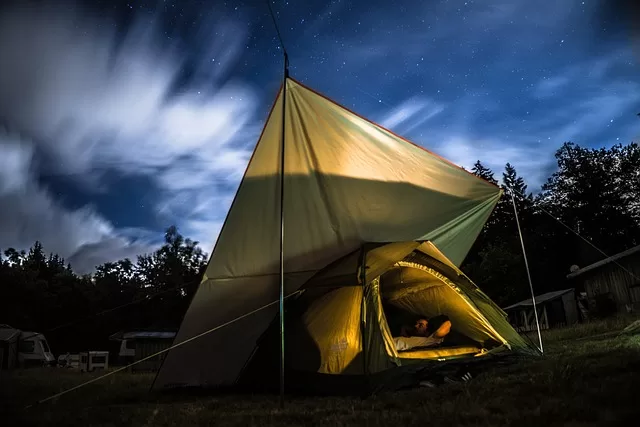It doesn’t matter whether you’re a seasoned traveler or a first-time road tripper, knowing how to plan a perfect vacation to make it successful and stress-free also involves knowing how to plan your road trip itinerary and routes. We know that there’s nothing quite like the freedom and excitement of a road trip, but without proper planning, it can quickly turn into a nightmare. So, before you hit the gas pedal and rev up your engine, don’t forget to take a moment to go over these essential tips and tricks on how to plan your road trip itinerary and routes.
Buckle up and get ready for the best ride of your life because this piece has you covered, from choosing the perfect destination to mapping out the best route. Here are some of the steps to take for properly planning your road trip itinerary and routes outlined in this piece.
Choose Your Destination
You can’t begin that trip without a destination in mind, right? So when you are thinking of how to plan your road trip itinerary and route, the first step would be to have a destination in mind. You can start by having a list of destinations and then settle on one. To make it easy for you, check out these road trip itineraries for a long weekend you are sure to like them. However, certain factors should guide your choice of destination and you should decide how long you want to make your journey as well as get ample information about the destination.
Factors to Consider When Choosing a Destination
Here are certain things you should put into consideration when choosing a destination.
- Personal Interests: Your personal interests must always be considered when choosing a destination for your road trip. For your personal interest, you may ask yourself questions like what is my most preferred scenery? Would I prefer the city or the countryside and nature? Or what about that landmark I have been dying to see?
- Accessibility: Another factor to consider is how easy it is to get to your chosen destination. Is it within driving distance or will you need to fly? Of course, since this is about a road trip it would be best to opt for destinations you will be driving. If you’re driving, is the route safe and easy to navigate? Are there any tolls or other expenses associated with getting to your destination?
- Time of Year: The time of the year is one thing you should be into consideration when choosing a destination. This is because some destinations may be more appealing than others depending on the season. For example, you may want to head to the beach in the summer or go skiing in the winter. Think about the weather conditions of your destination during the time you plan to visit too.
- Budget: Your budget is another important factor to consider when choosing a destination. How much can you afford to spend on transportation, accommodation, and activities? Are there any free or low-cost attractions in the area that you can take advantage of?
Researching Your Destination
To research and get ample information about your destination, you can either use the following means.
- Guidebooks: Guidebooks typically provide information on the most popular attractions, the best places to eat and stay, and tips on how to save money.
- Online Resources: Websites like TripAdvisor, Yelp, and Google Maps are some of the online resources that will provide reviews and recommendations for restaurants, hotels, and attractions. Google Maps can also be used to plan your route and estimate travel time.
- Social media: Social media can be a great way to get recommendations from people who have been to your destination before. Consider posting on Facebook or Twitter to ask for suggestions. For privacy and safety sake, you can search for relevant hashtags on Instagram to see what other travelers have done in the area.
Deciding How Long You Want to Spend at Your Destination
To decide how long your road trip will be when planning your road trip itinerary and route, here are certain things that should come to play.
- Consider Your Priorities: Are there certain attractions or activities that you really want to experience? How much time will you need to see everything on your must-see list?
- Be realistic: It’s also important to be realistic about how much you can fit into your schedule. You don’t want to try to cram too much into a short amount of time and end up feeling rushed or stressed. Being unrealistic will make your road trip turn out sour.
- Allow for flexibility: Even if it is good to have a plan and set dates up your sleeves, it’s a good idea to allow for some flexibility in your schedule. You never know what unexpected adventures or opportunities may arise, and it’s always nice to have a little extra time to explore your destination or simply relax and enjoy the scenery.
Determine Your Route
Another step to take when planning your road trip itinerary and routes, after choosing your destination would be to determine your route to get to your destination. To determine your routes you must consider certain factors to guide your plan, then go ahead to map out your route, and of course, don’t forget to add rest stops and detours.
Factors to Consider When Choosing a Route
Here are the factors that should guide your route planning.
- Scenery: One of the most important factors to consider when choosing a route is the scenery along the way. Do you prefer mountain views, rolling hills, or coastal landscapes? The type of scenery you enjoy can help guide you in selecting a route that will provide the best experience.
- Traffic and Road Conditions: It’s also important to consider the traffic and road conditions along your route. Are there any major construction projects or areas with heavy congestion? Will you be driving on highways or back roads? These factors can impact your driving time and overall experience.
- Time and Distance: Another key factor to consider is the amount of time and distance you are willing to travel. Do you prefer a leisurely pace with plenty of time to stop and explore along the way, or do you want to cover as much ground as possible in a short amount of time?
- Budget: Your budget is also an important consideration when choosing a route. Will you be paying tolls or driving on roads with high gas prices? Are there any attractions or activities that will require additional costs along the way?
Mapping Out Your Route
To map out your route to ensure a successful trip and to avoid getting lost on your road trip, here are some tips to help you.
- Choose a Mapping Tool: There are many different mapping tools available that can help you plan your road trip. Some popular options include Google Maps, MapQuest, and AAA TripTik.
- Set Your Starting Point and Destination: Once you’ve chosen your mapping tool, input your starting point and destination. This will give you a basic route to work with.
- Adjust Your Route: If you have specific destinations or attractions you want to visit along the way, you can adjust your route to include them. You can also use your mapping tool to avoid traffic or find scenic routes.
- Estimate Travel Time: Once you have your route planned out, you can also use your mapping tool to estimate your travel time. This way you will easily tell how long it will take to reach each destination on your itinerary.
Deciding on Rest Stops and Detours
Planning your rest stops and detours will add a lot of adventure to your trip. Therefore, follow these tips to have the most adventurous stops on your road trip.
- Plan for Rest Stops: It’s important to plan for rest stops along your route to avoid driver fatigue. Look for rest areas or places to stretch your legs and get some fresh air.
- Consider Detours: Detours can add unexpected adventure to your road trip. Look for unique attractions or scenic routes that you can explore along the way.
- Be Flexible: We know we are looking at how to plan your road trip itinerary and route, but then don’t forget to be flexible with your rest stops and detours. If you find a great attraction you weren’t expecting, don’t be afraid to take a little extra time to explore it.
Create an Itinerary
Another crucial step in planning your road trip itinerary and the route is to create an itinerary before you even hit the roads. Creating an itinerary for a road trip means planning out a schedule of the activities, destinations, and stops that you want to include in your trip. It typically involves mapping out your route, scheduling your stops and activities, and booking your accommodations in advance. While there are some of the best road trip itineraries that will give you the adventure and excitement you need, there are some factors you must consider to choose the right one for you or even create your own itinerary.
Why You Should Have an Itinerary
In case you are wondering, why should I have an itinerary when I can be adventurous and just hit ay road and begin to drive? Here are some of the benefits of having an itinerary when planning your road trip.
- It Saves time: It will save time because it allows you to plan out your route and schedule your stops and activities in advance.
- It Maximizes Experiences: With an itinerary, you can ensure that you make the most of your time on the road by including all the must-see attractions and activities on your trip.
- Having an Itinerary Reduces Stress: By planning your trip in advance, you can reduce stress and avoid feeling overwhelmed by having a clear plan to follow.
- You can Properly Budget: Creating an itinerary also allows you to budget for your trip, so you can ensure that you have enough money to cover all of your planned activities.
Factors to Consider When Planning Your Road Trip Itinerary and Routes
Here are some of the things you should put into consideration to help you when creating an itinerary.
- Time Available: The first factor to consider when creating your itinerary is how much time you have available for your trip. You’ll need to make sure that you have enough time to visit all of the destinations on your list.
- Distance and Length of Trip: When planning your itinerary, you’ll need to consider the distance between each destination and how much travel time is required. This will help you to schedule your stops and activities appropriately.
- Activities and Attractions: You’ll also need to consider the activities and attractions that you want to visit at each destination. This will help you to plan your schedule and ensure that you have enough time to visit all of the places on your list.
- Accommodations: Another important factor to consider is where you’ll be staying each night. You’ll need to ensure that you have accommodations booked in advance, especially during peak travel seasons.
- Budget: Your budget is also a key consideration when creating your itinerary. You’ll need to budget for gas, food, accommodations, and any planned activities or attractions.
Mapping out Your Itinerary
These are what you should do to properly map out your itinerary.
- Start with your must-see destinations: When mapping out your itinerary, start with the must-see destinations that you want to visit. These are the places that are at the top of your list and that you don’t want to miss.
- Schedule your travel days: Once you have your must-see destinations on your itinerary, you can schedule your travel days. This will help you to ensure that you have enough time to visit all of the destinations on your list.
- Plan your activities: After you’ve scheduled your travel days, you can plan your activities and attractions for each destination. Be sure to include enough time for each activity and factor in any travel time required.
- Book accommodations: With your itinerary in place, you can book accommodations for each night of your trip. You can even decide to try out unique road trip accommodations like camping, tree houses and so many other options available on the list. Be sure to book well in advance, especially during peak travel seasons.
Plan for Lodging and Food
You don’t hope to only do junk or maybe even water only during your road trip. It is best to look out for some healthy road trip food recommendations and plan ahead. Also, you will definitely take breaks and pass the nights and would like some comfort while at it, to make it even more adventurous you could opt for some of these unique road trip accommodations that can spice up and add to your experience or decide on the conventional lodging options. There are road trip apps and tools for this purpose to make it easier.
Factors to Consider When Choosing Your Lodging and Food Options
Here are some of the factors to think of when choosing your lodging and food options.
- Your Budget: Your budget will determine what lodging and food options to go for. You’ll need a budget if you didn’t have one and decide how much you’re willing to spend on accommodations and meals.
- Location: You’ll want to choose options that are convenient and close to your planned stops.
- Amenities: Consider the amenities that you need or want for your lodgings, such as free breakfast, a pool, or Wi-Fi. For food options, consider the variety and quality of food, as well as dietary restrictions.
- Reviews: Read reviews from other travelers to get an idea of the quality and experience of the lodging and food options you’re considering.
Researching Lodging and Food Options
Here are some tips to help your research the best food and lodging options of any kind along your route and possibly book appointments ahead.
- Use Travel Websites and Apps: Travel websites and apps like TripAdvisor, Booking.com, and Yelp can help you research lodging and food options based on your budget and location.
- Check Official Websites: Check the official websites of the hotels and restaurants you have decided on, for promotions and special offers.
- Ask for Recommendations: Ask friends and family who have traveled to your planned destinations for recommendations on lodging and food options.
- Check Local Tourism Sites: Check local tourism sites or visitor centers for recommendations and discounts on lodging and food.
Creating a Budget for Lodging and Food
When planning your road trip itinerary and route, follow these tips to create a budget for your food and lodging when on a road trip.
- Determine Your Overall Trip Budget: Before you can create a budget for lodging and food, you’ll need to determine your overall trip budget, including gas and other expenses.
- Allocate a Portion of Your Budget: Once you have your overall trip budget, allocate a portion for lodging and food. This will help you determine how much you can spend on each.
- Prioritize Your Spending: Consider the factors mentioned earlier when choosing lodging and food options, and prioritize your spending based on your needs and preferences.
- Be Flexible: Be flexible with your budget, as unexpected expenses may arise during your trip.
Plan for Activities and Attractions
It is always best to have activities and attractions planned out when planning your road trip itinerary and route. From road trip games to other things to do on a trip, and if you are traveling with teenagers or kids you may want to consider checking out these road trip activities for kids and things to do on a car trip with teens to make it even easier for you. Traveling with toddlers? Don’t panic! Here are some road trip activities for toddlers. Planning your activities will save you time, and money and offer more comfort and entertainment. Yes, it is advised to be flexible but that is not without having activities and attractions planned out.
Factors to Consider When Choosing Activities and Attractions
Here are some of the factors to consider when choosing your activities and attractions.
- Your Travel Buddies: Are you traveling with your friends? Then you may want to consider fun road trip activities with friends, and if with your significant other, engage in couples road trip games. In essence, the people you are traveling with will determine your activities and attraction spots so always have them in mind when choosing.
- Interests: One of the most important factors to consider when choosing activities and attractions for your road trip is your interests. Choose activities and attractions that align with your interests and those of your fellow travelers.
- Location: Another important factor to consider is the location of the activities and attractions. Consider the proximity of the options you’re interested in, to your planned route and accommodations.
- Duration: Consider the duration of the activities and attractions. Make sure you have enough time to enjoy each attraction without feeling rushed.
- Cost: Cost is an important factor to consider when choosing activities and attractions. Be sure to include the cost of admission or fees for activities in your budget.
Researching Activities and Attractions
Researching the attractions and the activities they have to offer is important for informed decisions. Use travel websites and apps like Viator, TripAdvisor, and Airbnb to do this research, and then go ahead to check the official websites of interest attractions to get more details, who knows, you may even find special offers! You can also ask for recommendations from family and friends and check out tourism sites and visitor centers too.
Creating a Budget for Activities and Attractions
To create the perfect budget, here are some tips to guide you.
- Determine Your Overall Trip Budget: Before creating a budget for activities and attractions, determine your overall trip budget, including lodging, food, and gas expenses.
- Allocate a Portion of Your Budget: Allocate a portion of your trip budget for activities and attractions. This will help you determine how much you can spend on each.
- Prioritize Your Spending: Consider the factors mentioned earlier when choosing activities and attractions, and prioritize your spending based on your needs and interests.
- Be Flexible: Be flexible with your budget, as unexpected expenses may arise during your trip.
Prepare for Emergencies
Another important step or thing you must never forget is that emergencies and accidents can arise during a road trip. So when planning your road trip itinerary and route, you should prepare for emergencies. This will ensure you have an all-around successful trip.
Why You Should Be Prepared for Emergencies
- Unexpected Events Sometimes are Unavoidable: Emergencies can happen anytime and anywhere, and it’s important to be prepared for any unexpected events that may occur during your road trip. You should have a road trip accident and emergency kit properly packed for this purpose.
- Safety: Being prepared for emergencies can help ensure your safety and the safety of your fellow travelers.
- Peace of mind: Knowing that you have a plan in place for emergencies can give you peace of mind and make your trip less stressful.
Items to Makeup/Create an Emergency Kit
- Basic supplies: Your emergency kit should include basic supplies like a first-aid kit, flashlights, extra batteries, a multipurpose tool, and a portable phone charger.
- Food and water: Include non-perishable food and bottled water in your emergency kit, in case you get stranded or stuck in your car for an extended period.
- Warm clothing and blankets: Pack warm clothing and blankets in your emergency kit, especially if you’re traveling in colder climates.
- Car-related supplies: It’s also a good idea to pack your car accessories for road trips like a spare tire, tire jack, and tire gauge in case of a flat tire or other car-related emergencies.
How to Handle Emergencies On the Road
- Stay calm: In case of an emergency, it’s important to stay calm and assess the situation.
- Call for help: If you have a cell phone, call for help immediately. If you don’t have a signal, try to find a place where you can get a signal, like a high point or a rest area.
- Know basic car maintenance: Enroll in some car maintenance classes. It’s a good idea to know basic car maintenance, like how to change a tire or jump-start a car battery.
- Follow the instructions of emergency responders: If emergency responders arrive, follow their instructions and cooperate fully.
Conclusion
Knowing how to plan your road trip itinerary can transform the entire adventure and make it more entertaining and successful, giving you an incredible trip that will create lasting memories. Asides from the entertainment, planning your road trip itinerary and route helps you stay organized and prepared for unforeseen circumstances, which is crucial to ensure a safe and enjoyable experience.
By following the tips outlined here, such as choosing your destination, determining your route, creating an itinerary, planning for lodging and food, and preparing for emergencies, you can create a well-organized and memorable trip.
If you have had everything planned, don’t hesitate, just begin that trip already! You’ll be amazed at the new places you’ll discover and the exciting experiences that await you on the open road. Remember, careful research, flexibility, and creativity are key to making your road trip a success. So, what are you waiting for? Why not go ahead to grab your map, gather your friends or family, and start planning your next adventure?



























